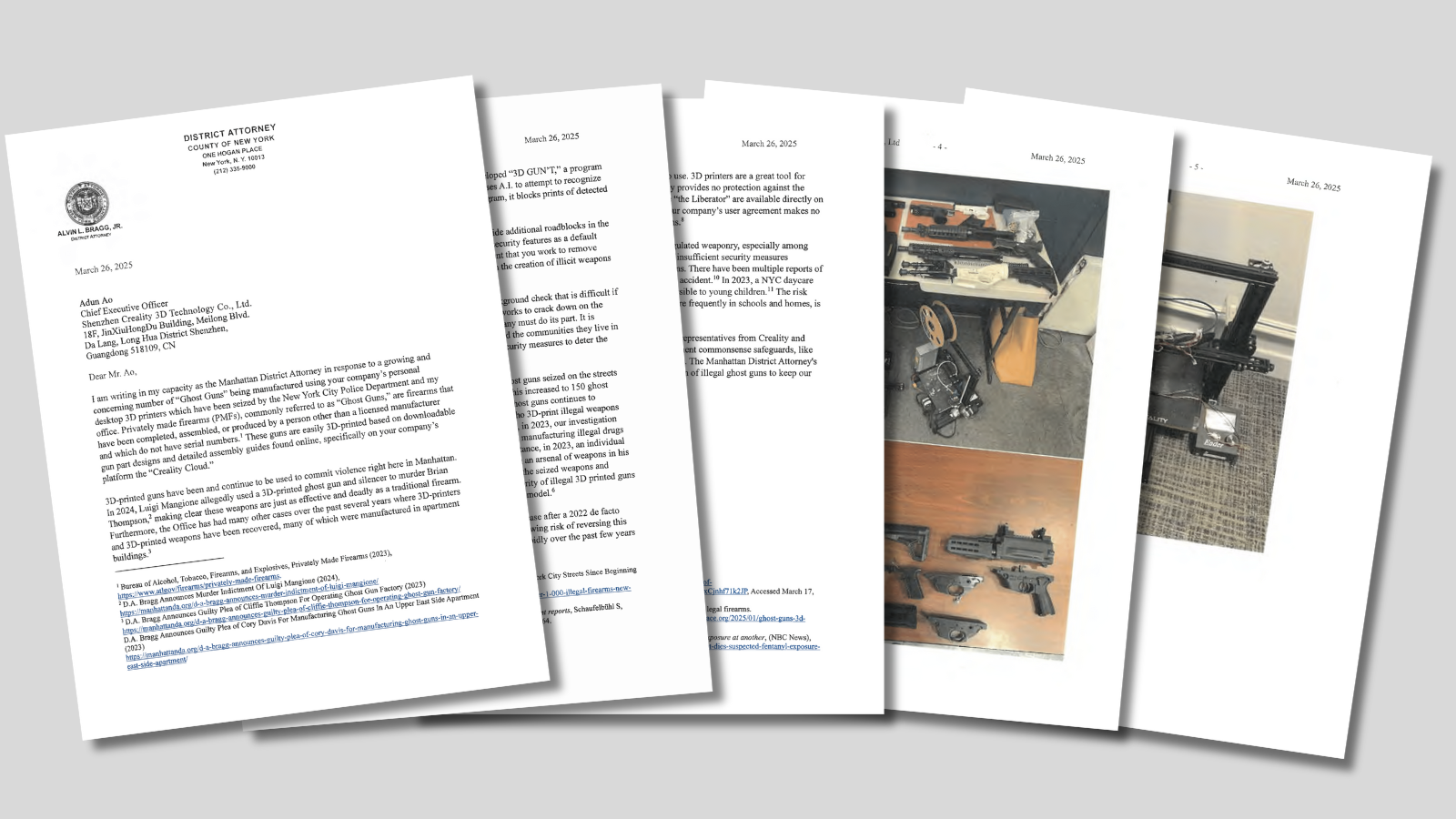We spoke with Thingiverse about its new AI-driven ghost gun detection that eliminates designs for 3D printing - companies turn to AI to block production of ghost guns

Manhattan District Attorney Alvin L. Bragg, Jr. has set his sights on eliminating 3D printed “ghost guns” — firearms manufactured illegally using 3D printers that lack serial numbers to allow tracking or registration. This caused Thingiverse, the world's largest platform for 3D models for printing, to institute new restrictions in an effort to combat designs that can be used to manufacture ghost guns. We spoke with Thingiverse about its new policies and how it plans to enact them.
Ghost guns have existed long before 3D printing came along, and could be made from simple metal pipes and springs by a talented metalsmith. It should be noted that in the United States, the Second Amendment allows citizens to possess and manufacture many types of firearms for personal use without the need for background checks or registration of the completed weapon. Firearms made for sale fall into an entirely different category and must be properly regulated, tracked, and registered.
As we reported earlier, New York investigations have triggered a crackdown on 3D printed gun files at Thingiverse, the world’s oldest and largest 3D file-sharing site.
We reached out to Thingiverse to find out how the company planned to keep 3D-printed firearms off the platform. “At Thingiverse, safety and creativity go hand in hand,” said Rob Veldkamp, the VP of Thingiverse, in a statement emailed to Tom’s Hardware. “We’re reinforcing our long-standing ban on sharing designs for functional firearms, critical gun parts, or accessories that boost lethality while keeping cosplay props, airsoft models, and toy replicas welcome.”
Thingiverse, a file-sharing site originally set up by 3D printer manufacturer MakerBot, has operated under the umbrella of Ultimaker since 2022, when the companies merged. The site is dedicated to hosting free files for the 3D printing community and is a huge resource for many educational programs, especially those that use MakerBot printers.
Perhaps because of this tight connection with students and education, Thingiverse has long held an anti-firearms policy. The platform prohibits uploading firearms, their components, or lethal accessories. Details on the anti-firearm policy can be found on the Thingiverse blog here.
It should be noted that Thingiverse’s policy is against “firearms” and not guns in general. The company has no problem with replica props, airsoft guns, sci-fi blaster toys, or gun-like objects that shoot candy. “Our efforts are aimed squarely at preventing the sharing of harmful and illegal firearms,” said Arun Chapman, who writes the Thingiverse company blog.
Get Tom's Hardware's best news and in-depth reviews, straight to your inbox.
Thingiverse will keep dangerous firearms off the platform through AI and human moderation. An AI tool will scan uploads and flag suspicious-looking files. Then, a real live human will decide if the computer identified a weapon or a harmless, gun-shaped object.
“AI will be used only to flag potentially harmful designs, but a human will always be the one to decide if something should be removed,” Chapman told Tom’s Hardware. If a file is removed from Thingiverse, it will be removed by a person, not a machine.
The Manhattan District Attorney also sent a letter to Chinese 3D printer manufacturer Creality back in March 2025, asking CEO Adun Ao to implement AI tools to prevent printers from creating firearms and to remove weapons from the file-sharing site Creality Cloud.

The district attorney cited software called “3D GUN’T” produced by Print & Go that claims to identify gun parts by using AI algorithms to sift through CAD files.
Print & Go, created by a small Spanish company, is a workflow system used to remotely manage print farms. It claims to be able to prevent guns from being 3D printed by analyzing files and comparing them to a library of known firearms. It would also use AI to determine if any file even looks like a gun, which could trigger alarms if harmless props or toys were printed.
As explained on the Print & Go website, the program can be installed in the printer’s firmware to operate even when the machine is offline. It is a highly invasive system that would also have access to a printer’s built-in camera to further identify “gun-shaped objects” and would include tracking to provide personal data to the authorities if it detects files it does not deem appropriate.

Denise Bertacchi is a Contributing Writer for Tom’s Hardware US, covering 3D printing. Denise has been crafting with PCs since she discovered Print Shop had clip art on her Apple IIe. She loves reviewing 3D printers because she can mix all her passions: printing, photography, and writing.